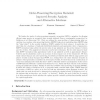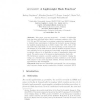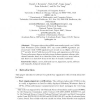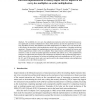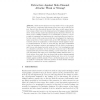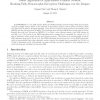CRYPTO
2011
Springer
14 years 15 days ago
2011
Springer
CRYPTO
2011
Springer
14 years 15 days ago
2011
Springer
Abstract. A time-lock puzzle is a mechanism for sending messages “to the future”. The sender publishes a puzzle whose solution is the message to be sent, thus hiding it until e...
182
Voted
CHES
2011
Springer
14 years 19 days ago
2011
Springer
This paper proposes spongent – a family of lightweight hash functions with hash sizes of 88 (for preimage resistance only), 128, 160, 224, and 256 bits based on a sponge construc...
132
click to vote
CHES
2011
Springer
14 years 19 days ago
2011
Springer
Abstract. The paper presents a novel and efficient method to generate true random numbers on FPGAs by inducing metastability in bi-stable circuit elements, e.g. flip-flops. Meta...
85
Voted
CHES
2011
Springer
14 years 19 days ago
2011
Springer
114
Voted
CHES
2011
Springer
14 years 19 days ago
2011
Springer
RSA-CRT fault attacks have been an active research area since their discovery by Boneh, DeMillo and Lipton in 1997. We present alternative key-recovery attacks on RSA-CRT signature...
CHES
2011
Springer
14 years 19 days ago
2011
Springer
115
click to vote
CHES
2011
Springer
14 years 19 days ago
2011
Springer
A lightweight and secure key storage scheme using silicon Physical Unclonable Functions (PUFs) is described. To derive stable PUF bits from chip manufacturing variations, a lightwe...
135
Voted
CHES
2011
Springer
14 years 19 days ago
2011
Springer
Randomness extractors are important tools in cryptography. Their goal is to compress a high-entropy source into a more uniform output. Beyond their theoretical interest, they have ...
170
Voted
CANS
2011
Springer
14 years 20 days ago
2011
Springer
At EUROCRYPT ’10, van Dijk, Gentry, Halevi and Vaikuntanathan presented simple fully-homomorphic encryption (FHE) schemes based on the hardness of approximate integer common div...
